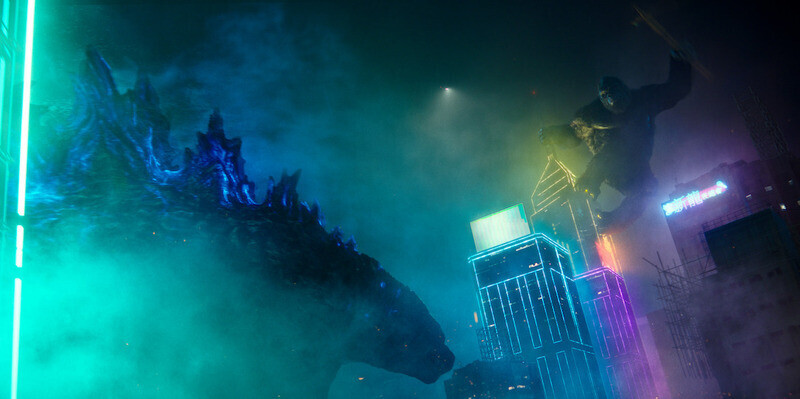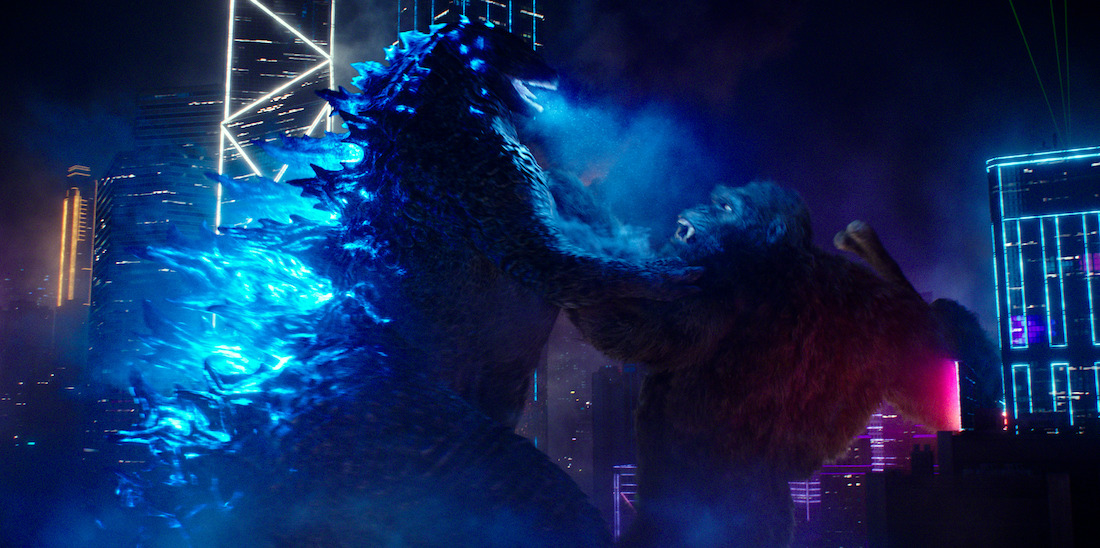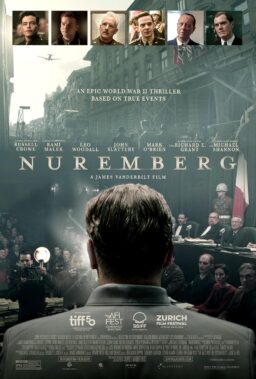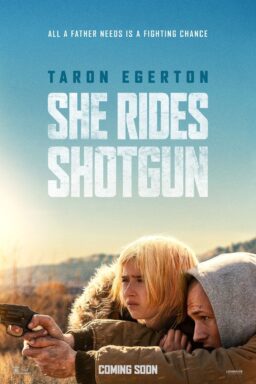Adam Wingard’s “Godzilla vs. Kong” presents its two cinematic titans like we’ve never seen them before. That’s a given in some respects, considering their initial fight on an aircraft carrier—an innovative, chaotic meet-cute that begins with Kong slugging Godzilla in the face. But it’s the visual style that also helps this sequel to “Godzilla: King of the Monsters” stand out as a franchise entry, like its love of sunset canvases and oh so much neon. These inspired ideas among others come from director Adam Wingard, who has been hungry for a massive movie since honing his vision on explosive indie projects (“You’re Next”) mid-budget genre homages (“The Guest”) and franchise entries (“Blair Witch”). His next project is likely to be “Face/Off 2,” another massive duel that is designed to exceed audience expectations, or else.
All of this monster artistry is a backdrop for the human factor of the movie, which has an ensemble of characters fighting to harness the strengths of Godzilla and Kong. (The cast includes Millie Bobbie Brown, Kyle Chandler, Alexander Skarsgård, Lance Reddick, Eiza González, Brian Tyree Henry, Demián Bechir, Julian Dennison, Rebecca Hall, Shun Oguri, and Kaylee Hottle as Jia, a young girl who communicates with Kong via sign language.) The journey leads its humans to a big rumble in Hong Kong, and also to the previously mentioned but never shown realm of Hollow Earth—an upside down world where Kong is at home, and in which Wingard flexes his imagination for classic sci-fi, otherworldly filmmaking.
Wingard spoke to RogerEbert.com about the making of “Godzilla vs. Kong,” how Stanley Kubrick inspired Wingard’s self-proclaimed “Star Wars” audition, the guarantee Wingard has for his upcoming “Face/Off” sequel, and more.

Watching this film within the trajectory of your career, I’m curious: at the beginning when you were becoming a director mid-budget movies, were you always interested in a larger scope?
I think big sci-fi spectacle films were why I got into making movies in the first place. “Star Wars” movies, the “Alien” films, those were the films that inspired me to become a filmmaker in the first place. But the interesting thing is when you’re up and coming in the indie world, your influences kind of shift. I knew that I couldn’t just start off in that place. I was always developing ideas in my head in high school that were big sci-fi movies, but then when I realized, “Oh, wait, I have to figure out how to actually make these things.” That’s when I started getting into more like experimental films and horror movies, and things that were actually achievable. I kind of stayed in that headspace for a long time, I actually kind of convinced myself to not really get excited about blockbusters. As a matter of fact, I was totally broke up until 2011. I was just kind of scrounging by, and I remember when “Avatar” came out, I just refused to go watch it because I didn’t have any money. I was so broke, I was like, I just can’t watch these big blue people running around. This expensive movie. I just didn’t want to get my hopes up, thinking about it in those terms.
Even in the last quite a few years, I kind of missed out on the whole Marvel thing. That was kind of part of, I wasn’t really watching a lot of mainstream movies and I’m so far behind that I still haven’t seen the new “Avengers” movies, I’ve only seen six Marvel films I think. So I’m kind of out of the loop there, but it’s not because I don’t like big special effects movies, it’s only in the last few years that I’ve been able to calm down and enjoy them in the same way I did as a kid because it’s now a possibility that I can actually do these things. So doing this movie was sort of a return to form for me, even though it seems like a departure it’s actually getting back to my roots. I’m finally at a place that I’ve been building to all these years, this was always sort of the goal, even though there was plenty of times where I didn’t even think this goal would be possible. But here we are, and it was such a great experience to be able to work off of pure imagination.
Would it be fair to say that this movie was almost therapeutic?
Yeah, absolutely. I think that’s like an understatement to a certain degree, because this is a life-long goal and ambition. The whole reason I exist as a filmmaker is these types of films. I still remember the moment that I decided I wanted to be a filmmaker, in terms of, I wanted to be the person that makes these movies. I believe it was ’89, ’88 I think. I remember that “Honey, I Shrunk the Kids” was coming out, and I was so excited about “Honey, I Shrunk the Kids.” I was obsessed with the trailers, it had everything I wanted in a movie. And I remember a trailer came on TV, literally I was in a box when I asked my mom this, it was one of those things where my parents figured out, if they got these big refrigerator boxes and just put them in our living room and we’d turn it into a play palace. And I remember sitting in this box and watching the “Honey, I Shrunk the Kids” trailer and turning to my mom and asking her, “Who is the person who decides where they put the camera? Is it the director or the producer?” I heard these labels but I didn’t know which one they were. And my mom says, “Ahh, I’m not sure. Maybe a producer?” And I was like, “I want to be a producer when I grow up!” And then you know of course later on, I learned that it was different. Well, maybe not all of the time, producers do tell you where to put the camera, but that was the moment where I had never backed down. I knew that’s what I wanted to do.

It’s funny you mention producers as telling you where to put the camera, because with “Godzilla vs. Kong” you’re making a massive, collaborative movie, in which I imagine you had to fight for a few things. I was curious about a couple ideas: I know that you’ve previously said you wanted to do the water fight scene since the very beginning. But was it your idea to have Kong punch Godzilla in the face in that wide shot? Can you tell me about coming up with that?
Yeah, I’m glad you mentioned that because there’s a couple stories I can share about this. So, the first would be that the first time I read the treatment, it wasn’t even a treatment. Terry Rossio wrote it based on a writer’s room they were in, and it was so loose that he called it “a proposal,” which is probably a way of just making like executives feel more comfortable. They’re more like, “Oh this isn’t defined, it’s a proposal. We love this.” It felt good, and I’ve actually used that, me and [Simon Barrett] when we’re doing our “Face/Off 2” treatment; we just ripped off exactly what Terry Rossio did because it was brilliant. We called it a proposal, makes people feel nice.
So I’m reading the proposal and it gets to all the action scenes, and it gets to the ship battle. And it’s very vague: “Here we are at the ship battle, you’re going to see Kong do things you’ve never seen him do before, he’s going to jump from ship to ship, Godzilla and Kong fight on an aircraft carrier, it’s going to be amazing.” And that’s basically how we left it. And the first thing I thought was, “Can Godzilla and Kong fit on an aircraft carrier?” I know that people aren’t coming to seek these movies for the ultimate depiction of reality, but I thought that it can’t strain credibility so far, right? I worked with my production designer friend, Tom Hammock, and he put together a little guide that showed a depiction of an aircraft carrier, and the actual size and weight of Kong and Godzilla as they existed in the Monsterverse films. And he showed me that the length of an aircraft carrier is over a thousand-something feet, and the monsters themselves are about 300, 350 or so. And so we kind of looked at that and you can actually see they can fit on there. And then the next step was the art department people—they put together a size test of some kind, and so obviously there’s no way to actually measure how heavy Godzilla and Kong are, but estimating the amount of space they take up and the size, the weight that they have together, versus the weight of what an aircraft carrier can supposedly handle, it worked. The math works. And then I thought about it further, I was like, “Well, if you took two bears and put them on a rowboat, the rowboat is not gonna sink to the bottom of the ocean, you know what I mean?”
With that said, I was excited that we can now put Godzilla and King Kong on an aircraft carrier with confidence. Naturally that’s an exciting image in itself, because we’ve never seen it before. And when it comes to the first punch … this is an interesting story and I’ve never told it before, and I’m not going to throw anybody under the bus because the same people I might have said had a bad idea here definitely had so many good ideas that it overshadows it. But I will say that we were looking at this shot, and we were looking at the animation, and the VFX supervisor, John “DJ” Des Jardin, was making a presentation for us while we were in Australia. They only had a couple shots, and one of them was a rudimentary animation of Godzilla getting punched in the face by Kong on an aircraft carrier, in a wide shot. One of the producers looked at it and said, “We always have this shot in the movies, this wide shot. Do we need this?” They’ve seen it and done it, they’ve been there, they’ve done all these movies, and they’re over it. You’ve got to really impress them, which is a good thing, from my perspective. Everything has to land in a very exciting way, because you almost want a jaded audience coming into it. And I remember immediately DJ was like, “You guys are going to want this shot. Trust me.” And I was talking to him after the trailer release, and I was like, “Remember when the first shot they asked us to cut was this aircraft carrier shot that’s like the first literal image we released of the movie, and it’s like literally the main moment of the film?” And he says, “Yeah, I tell everybody about that all the time, it’s hilarious.” It’s one of those things.

With that sense of fighting for these big choices, there’s also this specific focus here on daylight. And this movie has some great clear skies. What is important to you about such clarity with these fight scenes?
I wanted it to be vibrant. I knew that when we were going to have fights in the daytime … I hate high-overhead lighting, I hate bland middle-of-the-day lighting. So you’ll notice that it’s basically magic hour almost every time the sun’s out, it’s always just on the horizon. It just looks fantastic. So I knew that our daytime scenes were going to be these beautiful, backlit sun shots that were just golden and orange and still had that vibrancy. And on top of that I knew that our nighttime scenes were going to be, for instance in Hong Kong—when I look at the treatment and it mentioned that they end up in the city at the end, it was kind of vague. The first instinct that I had right away when I heard about the idea of doing “Godzilla vs. Kong” was I want to see Godzilla and King Kong in a neon, futuristic city. I want to see what Godzilla’s scales look like reflecting colorful neon light and Kong’s fur. That was just right away the main image to me. And that’s what we did and we went so overboard. We just wanted that sequence to look like candy, we wanted you to just want to bite into it. [laughs]
Was there any pushback to go so neon like that?
No, not at all. The studio really wanted a film that put the monsters in a place we had never seen before, and that’s always the number one thing they were pushing me for. They gave me so much leeway in terms of there visual scope of the movie. There was never any issues there. The push was always, “We’ve seen these characters in so many movies, Godzilla is literally in over 30 movies, Kong is in a ton of things.” If we’re going to show them in this film we have to show them in new environments and in ways that they’ve never seen before, and doing things we’ve never seen before.
What was especially tricky then, about getting Hollow Earth right?
Well, the trickiest thing about it is when you look at it on the page, it’s basically, “Oh, this is a ‘Journey to the Center of the Earth’ movie, right?” And that was a big dirty word. Nobody was ever allowed to mention “Journey to the Center of the Earth” in the offices. Because what that conjures in your head are dark caves and big mushrooms that are oversized and those kind of cliches. I went back and watched every “Journey to the Center of the Earth” movie that I could find, including a lot of those cheap Hammer movies, and they all kind of were very similar. Nobody broke the mold too much about that—you’re going into the earth, so it’s kind of cave-like, basically.
So, my thought basically was, “I don’t want this to be like we’re going into the world, I want to treat it like we’re going into a whole other world. I want this to be like more like my ‘Star Wars’ audition, I want to take you somewhere you’ve never been.” And the kind of a-ha moment for me was when I started thinking about what gravity would look like inside of the earth. I immediately thought of “2001: A Space Odyssey,” and the way that the space station works in that film. It rotates, and instead of getting stuck to the surface you’re stuck to the outside, so you can walk on the ceiling and on the ground. And when I started conceptualizing it in that kind of way, that’s when I was like, “I can really wrap my head around this and make this super unique and interesting,” and it gave me a lot to play off of. So the real sweet spot was thinking about it like another planet, and not just going into a cave.

Was it confusing dealing with the Hollow Earth’s upside down logistics, especially with the camera shots that articulate a swooping point of view?
To me it was always very straightforward. I think some people had a hard time wrapping their heads around it. But to me it was just like, there’s a waterfall in the ceiling, that’s OK, but if you’re back here everything looks normal. And it was important to illustrate that visually in the film, because it’s one thing to just show that in a wide shot and you’re trying to take it all in, and we purposefully tried to make it disorienting and a little confusing initially when you’re in there. But the way we wanted to really visually illustrate it, so that it made sense for the audience, is the scene, which was actually never in the script, I just came up with it and pitched it to my VFX supervisor and he discreetly went off and developed it without telling anybody so that people couldn’t shoot it down too early. But the idea was that I wanted to show the invisible line of where the gravity shifts, and so there’s a sequence where you see all these rocks floating that are trapped in this gravity line.
And it becomes this kind of profound sequence for Kong, because we really see him … in a weird way Hollow Earth becomes this exploration of this character becoming almost more self-aware, it’s his “2001” kind of moment as well, to use another Kubrick comparison. It was an interesting lesson for me in a movie like this, which is that people love these big crazy ideas. And sometimes the best way to get them to the finish line isn’t to get them in the script, because it’s easy for them to see that and be confused on the page, and tell you “We don’t want this.” But if you can get it in an animation phase where you can show people and present it to them, that’s how you get it to the final phase. There’s lots of little tricks that I’ve learned that were beneficial going forward.
As a massive “Face/Off” fan, I’ve got to ask: can you guarantee there will be more sentimental face touching?
Um, yes, absolutely. I think in the script, we write it as “the classic Face/Off gesture,” with the hand touch. It’s hilarious when you see it for the first time in the film because you’re like, “Wait, what’s going on? Is this a normal thing for these people? It seems unsanitary?” And it’s funny because like, I don’t think that gesture has existed in any type of reality outside of that film, ever, and certainly not in any other film. So, it’s very unique in that sense. And I actually was talking with one of the original producers—[writer Simon Barrett] and I were over a Zoom—and we were like, “OK, who came up with the facial gesture? Because we think it’s John Woo, but where did it come from?” It has that kind of John Woo sentimentality to it, and it just makes sense, and it’s so sincere to a level that it’s almost awkward, but that’s why it’s great. But he told us that it was in the script, if you can believe that. The writers actually put that in the script. I don’t know how they described it, or if they imagined it differently.
I have a lot of questions for those writers because I’ve heard a lot about the process of writing the first “Face/Off,” that it used to have weird monkey slave people in it and stuff. That it was set in the future? Apparently the original draft for the “Face/Off” script was completely insane, and it only kind of gradually changed to what it was, later. Simon and I, years ago we saw a screening at Tarantino’s theater, the New Beverly, of “Face/Off,” and it was the best Q&A I’ve probably ever seen. The stories they have are just unbelievable, and there’s so any almost versions of that movie—it was almost Stallone and Schwarzenegger, and all these different actors. And where they landed was just so perfect. Nobody could have done it better than Cage and Travolta, it’s one of the defining movies of both of their careers, and they’ve done so many great films. I feel very honored to get back in there and bring “Face/Off” back, and fingers crossed hopefully it will come together and we’ll be able to shoot this thing next year.
And you’ll be able to do your first big shootout movie.
That’s a huge dream for me. You know, what’s funny is that the very first conversation that Simon Barrett and I had was on the set of his movie “Dead Birds,” back in 2003. I was there with my friend Evan Katz, who is also a director now, and Evan was writing for Fangoria. He was like, “You should come with me, you can just pretend like you’re helping me write the Fangoria article, and we can go on this movie set.” And so we go on this movie set, and that’s how I met Simon, and we were interviewing Simon. I was just there hanging out. And the very first conversation that Simon and I had was about John Woo’s “The Killer,” we both kind of hit it off because that was both one of our favorite movies of all time. Our initial bonding experience was over John Woo, so it’s really appropriate that we’re doing our John Woo movie.
“Godzilla vs. Kong” will be in theaters and available on HBO Max on March 31.












